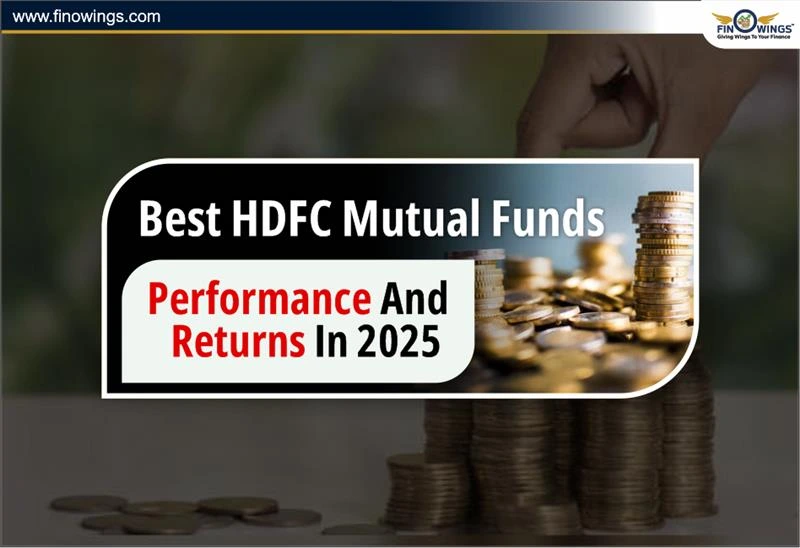Home >> Blog >> How to Choose the Best Mutual Fund 2024?
How to Choose the Best Mutual Fund 2024?

Table of Contents
Introduction
Mutual funds have gained immense popularity in recent years as an investment option. With so many mutual fund options available, it can be overwhelming for investors to choose the right one. In this blog, we will discuss the criteria for selecting mutual funds and explore some top-performing funds in different categories.
Criteria for Selecting Mutual Funds
When selecting a mutual fund, it is important to consider various parameters, such as:
- Return Rate
- Risk Level
- Beta
- Standard Deviation
- Alpha
Return Rate
The return rate is a crucial factor in selecting a mutual fund. It is important to analyze the rolling return of a fund over a specific time frame. Consistent returns are preferred over high or low returns, as they indicate stability and better performance.
Risk Level
Risk is another important consideration. Funds with higher returns often come with higher risks. It is essential to assess the risk tolerance and investment goals before selecting a fund.
Beta
Beta measures the volatility of a fund in relation to the market index. A higher beta indicates higher volatility, while a lower beta suggests stability. Investors should consider their risk appetite while analyzing a fund's beta.
Standard Deviation
Standard deviation is a statistical measure that indicates the degree of variation of a fund's returns from its average annual return. Higher standard deviation implies higher risk. Investors should compare the standard deviation of different funds to assess risk levels.
Alpha
Alpha measures a fund manager's ability to generate returns in relation to the risk taken. A positive alpha suggests that the fund has outperformed its benchmark index. Investors should look for funds with higher alpha values.
Detailed Video
Top Performing Funds
Large Cap Category
In the large-cap category, two funds stand out:
-
Nippon India Large Cap Fund
-
ICICI Prudential Bluechip Fund
Both funds have consistently delivered impressive rolling returns over the past 5 years. However, the Nippon India Large Cap Fund has a slightly higher alpha, indicating better risk-adjusted returns.
Mid Cap Category
When it comes to mid-cap funds, two funds have shown excellent performance:
-
Motilal Oswal Midcap 30 Fund
-
Quant Small Cap Fund
While both funds have delivered strong returns, the Motilal Oswal Midcap 30 Fund has a higher alpha and lower standard deviation, making it a favorable choice for risk-taking investors.
Small Cap Category
For investors seeking higher risk and returns in the small-cap category, the Parag Parikh Flexi Cap Fund has been a top performer. With consistently high returns and a relatively lower beta, this fund has provided an attractive risk-reward ratio.
Tax Saving Fund (ELSS)
For tax-saving purposes, two funds have stood out:
-
Bank of India ELSS Fund
-
Motilal Oswal ELSS Fund
Both funds have outperformed their benchmark indices and provided higher returns. However, the Bank of India ELSS Fund has a lower standard deviation and higher alpha, making it a more favorable choice.
Conclusion
When selecting a mutual fund, it is essential to consider various parameters such as return rate, risk level, beta, standard deviation, and alpha. By analyzing these factors, investors can make informed decisions and choose funds that align with their financial goals and risk appetite. Remember, the fund manager's expertise and performance play a crucial role in a fund's success. Therefore, it is advisable to research and choose funds managed by experienced professionals. Happy investing!
Disclaimer: This Mutual Funds Analysis is only for informational purposes and should not be considered as investment advice. Always do your research and consult with a financial advisor.
Frequently Asked Questions
Return rate indicates the performance of a mutual fund over a specific period. It's advisable to prioritize consistency in returns rather than solely focusing on high returns, as stability is key for long-term investment success.
Alpha reflects a fund manager's ability to generate returns relative to the risk undertaken. Positive alpha indicates outperformance against the benchmark index, making funds with higher alpha values desirable for investors seeking superior risk-adjusted returns.
Curious about withdrawing part of your mutual fund SIP investment? Yes, you can! With mutual fund SIPs, it's simple to withdraw a portion of your investment whenever you need to.
Notable options for tax-saving purposes include Bank of India ELSS Fund and Motilal Oswal ELSS Fund, both outperforming their benchmark indices and offering attractive risk-reward ratios.
















.webp)



Arjun primalani | Posted on 16/03/2024
Short but sensible knowledge please keep posted to investors like me which are new in mf world